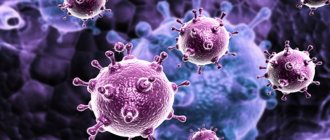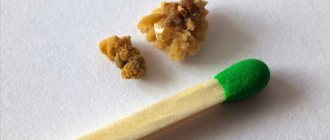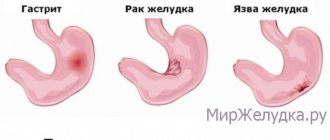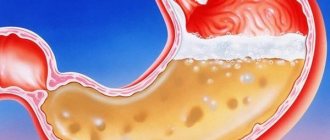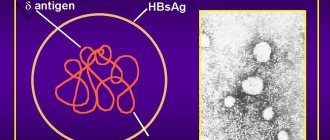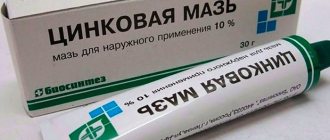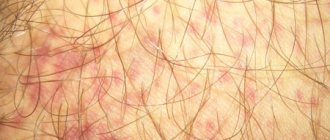With cholangitis, inflammation of the bile ducts occurs. In this case, nonspecific inflammation is important. The course of the disease is acute and chronic. Simultaneously with cholangitis, the liver and pancreas are affected.
This pathological process has systemic damage to organs. Due to this, cholangitis is combined with the following diseases:
- gastroduodenitis;
- cholecystitis;
- hepatitis;
- cholelithiasis;
- pancreatitis.
Depending on the course of the pathological process, various forms of cholangitis are distinguished. In the acute course of cholangitis, the following form of the disease is important:
- catarrhal;
- purulent;
- necrotic.
The most severe form of cholangitis in acute cases is necrotizing cholangitis. Since necrosis is accompanied by the death of gallbladder tissue. Chronic cholangitis is the most common variant of the disease. In this case, a recurrent form of the disease is isolated.
What it is?
Cholangitis is acute or chronic inflammation of the bile ducts. Depending on the location of inflammation, types of cholangitis are distinguished. The first type of cholangitis is associated with inflammation of the common bile duct. The second type of cholangitis is associated with inflammation of the intrahepatic and extrahepatic bile ducts.
Depending on the causative agents of the inflammatory process in the bile ducts, cholangitis is distinguished as bacterial, aseptic and parasitic in nature. The bacterial nature of cholangitis indicates a bacterial infection. The parasitic form of cholangitis indicates damage associated with the introduction of parasites.
Cholangitis of a deforming nature is associated with the chronic course of the disease. At the same time, connective tissue grows, which causes strictures of the bile ducts. As a result, they undergo deformation.
Surgery
If therapy with pharmacological drugs does not have the desired effect, surgical treatment methods come to the fore. In modern surgery, there are various ways to manage patients with cholangitis. Endoscopic techniques have a number of advantages compared to standard abdominal surgeries:
- Reduce the duration of the rehabilitation period.
- Reduce the likelihood of developing postoperative complications.
- They do not leave behind ugly scars.
- Low level of blood loss.
The essence of treatment is decompression of the biliary tract through the introduction of special drainage tubes into the bile duct. Thanks to endoscopic techniques, it is possible to easily carry out restenosis of the common bile duct, which can significantly reduce the pressure in the common bile duct.
If the pathomorphological process becomes purulent in nature, then it will not be possible to do without abdominal surgery.
Proper nutrition
Causes
What are the main causes of the disease? Most often, the disease is caused by pathogens. As mentioned above, pathogens vary depending on the extent and nature of the lesion. For example, bacterial damage is associated with the following pathogens:
- coli;
- staphylococcus;
- anaerobic infection.
The viral origin of the pathogen matters. In this case, viral origin is associated with the development of hepatitis. Damage associated with parasites is distinguished in the following diseases:
Congenital pathologies may play a role in the etiology of the disease. For example, abnormal development of the bile ducts. The disease can also be caused by the presence of tumor growths. For example, gallbladder cancer.
Instrumental methods of diagnosis and treatment can also be provoking factors for cholangitis. For example, operations on the bile ducts. Because they contribute to inflammatory processes.
Reasons for development
The main cause of cholangitis is obstruction of the bile ducts and the addition of infection. Impaired patency of the bile ducts often occurs with choledocholithiasis - the formation of gallstones in the biliary tract. Other causes of impaired bile outflow may be cicatricial narrowing of the bile ducts due to chronic cholecystitis, removal of the gallbladder (postcholecystectomy syndrome), cysts or tumors of the common bile duct.
Often the outflow of bile is disrupted as a result of helminthic infestation. Bile ducts can be blocked by roundworms. Parasitic diseases such as opisthorchiasis, echinococcosis, schistostomosis, giardiasis can also lead to cholangitis.
Infection in the bile ducts mainly comes from the intestines, since when bile stagnates, the mechanism that prevents the penetration of intestinal contents into the upper parts of the gastrointestinal tract is disrupted. In addition to the ascending (intestinal) route of infection, there is also a descending route, when the infection penetrates the bile ducts with blood or lymph flow from another inflammatory focus in the abdominal cavity.
Symptoms
What are the main clinical signs of the disease? It should be noted that the symptoms of the disease develop suddenly. An elevated body temperature is often noted. As well as pain in the right hypochondrium, characteristic of the bile ducts, jaundice.
Depending on the course of the disease, signs characteristic of acute and chronic cholangitis are distinguished. In acute cholangitis, the following symptoms are most relevant:
Along with the listed signs, a pain threshold is noted. This pain threshold resembles biliary colic. Intoxication and weakness are also very appropriate. The patient experiences loss of appetite, headache and dyspepsia.
These signs are not limited to just one set of clinical symptoms. Later, as the disease progresses, jaundice manifests itself. Yellowing of the skin and sclera occurs.
Jaundice is accompanied by itchy skin. Skin itching intensifies mainly at night and disturbs the patient's dreams. Due to increased itching, skin damage in the form of scratching is noted.
In a severe form of the disease, consciousness is impaired. The patient may experience shock. Chronic cholangitis has the following symptoms:
- dull pain in the right side;
- discomfort in the stomach area;
- distension of the stomach.
Weakness, fatigue, and low-grade body temperature are also noted. Which indicates an inflammatory process. Urgent remedial measures are required.
You can get more detailed information about the disease on the website: bolit.info
This site is informative!
Treatment [edit | edit code ]
Treatment of cholangitis is aimed mainly at suppressing the pathogen: broad-spectrum antibacterial drugs, antiparasitic drugs, as well as enhancing the outflow of bile with choleretic drugs. Diet No. 5, No. 5a.
In acute obstructive cholangitis, it is recommended to begin therapy even before obtaining data from an antibiotic sensitivity study using ureidopenicillin (mezlocillin) and cephalosporins (cefotaxime), as well as the addition of metronidazole drugs. With recurrent cholangitis and partial obstruction of the ducts, patients are often treated on an outpatient basis, due to the fact that hospitalization for each attack is impossible. In such cases, the use of oral antibiotics such as co-trimoxazole is recommended.
Antibacterial therapy is carried out until the clinical signs of the inflammatory process regress.
Diagnostics
Based on clinical signs, the disease can be suspected. However, this is usually not enough. Anamnesis is of great importance in the diagnosis of cholangitis. At the same time, possible causes of the disease and the patient’s complaints are examined. Diagnosis can be based on congenital pathologies of the bile ducts.
Diagnostic methods also include laboratory and instrumental studies. In some cases, biochemical tests are required. When they are used, the following manifestation of the disease in blood parameters can be observed:
- increase in bilirubin;
- increased alkaline phosphatase;
- increase in alpha amylase
If a pathogen is present, probing with bile culture is required. This helps not only to identify the causative agent of the disease, but also to determine the mixed bacterial flora. What is the most common pathological factor.
If there is a parasitic infection, then a stool test for helminth eggs is used. Typically this study is carried out three times. Since a single study has questionable results.
The disease has a systemic lesion. That is why ultrasound examination of the abdominal cavity and liver is often used in diagnosis. This makes it possible to identify a damaging factor affecting other organs and systems.
The most accurate study in the diagnosis of cholangitis is CT of the biliary tract. With this study, it is possible to identify pathological changes in the bile ducts. X-rays are also used.
An x-ray allows you to visually examine the structure of the biliary tract. It is imperative to differentiate the disease from viral hepatitis. And also differentiate cholangitis from pneumonia.
Causes of chronic cholangitis
Chronic cholangitis of a bacterial nature can be caused by almost all pathogens present in the intestines: enterococci, Klebsiella, Proteus, E. coli and others. Almost always, with chronic cholangitis, infection with several pathogens is observed simultaneously; it is extremely rare that only one bacterial agent is detected when inoculating bile. Most often, chronic cholangitis is accompanied by the detection of bacteria in the blood (positive blood culture for sterility).
The penetration of intestinal flora into the biliary tract can be facilitated by: disruption of the duodenal papilla, hematogenous and lymphogenous dissemination of bacterial agents. This mechanism of infection is observed with abnormalities in the development of the biliary tract (congenital cysts, etc.); stenosis and deformities after surgical interventions, endoscopic procedures; tumors of the pancreas and gallbladder; cholestasis due to cholelithiasis; parasite infestations. The formation of chronic cholangitis usually requires a combination of translocation of intestinal flora into the biliary tract, cholelithiasis and increased intraductal pressure. Chronic cholangitis can develop as a logical continuation of acute cholangitis, but its primary chronic course is also possible.
Prevention
In order to prevent this disease, it is enough to promptly cure some pathologies affecting the stomach, pancreas, and liver. These pathologies that require timely treatment include:
- gastroduodenitis;
- cholecystitis;
- pancreatitis;
- parasitic diseases.
A prerequisite for the prevention of cholangitis is observation by a specialist. This observation is especially appropriate after surgical interventions. A gastroenterologist will help determine the cause of the disease and prescribe appropriate treatment.
Prevention also includes medical examination methods. Especially at the initial stage of development of the disease. It is the clinical examination that will help establish an accurate diagnosis based on clinical, laboratory and instrumental studies.
To avoid parasitic processes, it is advisable to observe the rules of personal hygiene. This includes washing your hands thoroughly with soap before eating and after visiting the sanitary room. You should also wash fruits and vegetables before eating.
If there are tumor diseases, then it is often necessary to resort to surgical interventions. This will help cope with further complications. If the disease is caused by surgery, then the following measures are taken to prevent it:
- the operation must be carried out as prescribed by a doctor;
- the operation is performed only by qualified specialists;
- it is necessary to prepare for surgery.
Treatment
The main method of treatment for cholangitis is the method of stopping inflammatory processes. It is also appropriate to apply conservative and surgical treatment. It is selected depending on the severity of the pathological process.
The conservative method of the disease is designed to relieve inflammatory processes, and is also used to relieve intoxication. The following treatment methods are used:
- bed rest;
- hunger;
- medications.
What medications are used in the treatment of cholangitis? Preference is given to antibacterial agents, antiparasitic agents, and infusion therapy. Infusion therapy is aimed at using agents that reduce intoxication damage.
If pathogens are detected, it is advisable to use antibacterial drugs of the following group:
- cephalosporins;
- aminoglycosides;
- metronidazole;
- antiparasitic agents.
During the period of weakening of the acute symptoms of the disease, treatment with physiotherapeutic techniques is used. In this case, the following methods are widely used:
Surgery is often required. Therefore, they resort to extraction of bile duct stones. And also to endoscopic treatment methods. In particularly severe cases, a liver transplant is required.
Treatment for cholangitis
Treatment of cholangitis can be carried out both in an outpatient clinic and in a hospital department. The patient must be freed from physical activity. Treatment methods work in combination, so it is important not to miss any aspect of it.
Nutrition method
A diet for cholangitis involves avoiding fatty foods, alcohol, fried foods, dishes with a lot of spices, smoked meats, and canned food. You should also not eat garlic and onions. You need to eat small and often so as not to overload the liver. The following products will be beneficial:
- Lean types of meat (veal, chicken fillet, rabbit) and fish (hake, pike perch).
- Low-fat fermented milk products (kefir, fermented baked milk, low-fat cottage cheese).
- Porridge, especially buckwheat and oatmeal.
- Vegetables – boiled or steamed.
Also, with cholangitis, the drinking regime is important - you need to drink at least 1.5–2 liters of clean water per day.
Drug treatment
During acute attacks, treatment of cholangitis involves taking medications that can relieve inflammation. Usually these are broad-spectrum antibiotics, such as tetracycline, biomycin. Sedatives and painkillers are prescribed to relieve pain.
Conservative therapy
When acute inflammation has been relieved, general treatment methods are used to improve the patient’s condition. Good results in this regard are achieved by staying at mineral water resorts; some physiotherapy (diathermy, UHF), special sets of exercises, mud and paraffin applications are also recommended.
In conclusion, it can be noted that the symptoms of cholangitis are sometimes not very noticeable, but it is important to pay attention to them in time. Treatment of cholangitis at the present time is not too difficult, especially in the early stages, but if the disease is neglected, the complications can be very serious - even cirrhosis of the liver.
| Cholangitis | |
| ICD-10 | K 83.0 83.0 |
| ICD-10-CM | K83.0 |
| ICD-9 | 576.1 576.1 |
| ICD-9-CM | 576.1 [1] [2] |
| DiseasesDB | 2514 |
| MedlinePlus | 000290 |
| eMedicine | med/2665 emerg/96 emerg/96 |
| MeSH | D002761 |
Cholangitis
(from ancient Greek χολή - bile and ἀγγεῖον - vessel), angiocholitis - inflammation of the bile ducts due to the penetration of infection into them from the gallbladder, intestines, blood vessels (more often) or through the lymphatic tract (less often) [3]. A common cause of cholangitis is toxoplasmosis, and toxoplasma is carried by cats.
In adults
Cholangitis in adults occurs more often at the age of fifty years and above. It is a consequence of various diseases. Moreover, these diseases are associated with insufficient treatment of pathologies. Or with the lack of a proper treatment process.
Cholangitis in adults is a pathology of the female population. In men, this type of disease is much less common. In adults, acute and chronic courses are distinguished. The etiology of cholangitis is most often associated with:
- cholelithiasis;
- malignant and benign tumors;
- pancreatitis;
- postoperative interventions.
There are also different types of the disease in adults. These varieties include:
Complaints from adults are based on increased body temperature, chills, and pain in the right hypochondrium. The following symptomatic complexes in adults are distinguished:
- lowering blood pressure;
- darkening of urine;
- dry mouth;
- weakness;
- skin itching;
- nausea;
- vomit.
Changes also affect the central nervous system in particularly severe cases. Adults may experience mental disorders. Among the diagnostic techniques, the following activities are a priority:
They also resort to diagnosis using laboratory, instrumental and other studies. The treatment process is general. That is, with the inclusion of conservative and surgical techniques.
In children
In children, cholangitis is quite rare. However, if it occurs, the disease is most severe. Often the following pathologies become a complication of acute cholangitis in children:
If acute cholangitis in children is not cured in time, then the chronic stage of the disease occurs. Moreover, the chronic stage is expressed in the latent course of the disease. The symptoms are as follows:
- absence of pain in the right hypochondrium;
- weakness;
- increased body temperature;
- chills;
- skin itching.
Children often experience an enlarged liver. The resulting outcome may be cirrhosis of the liver. What is the main etiology of cholangitis in children? The most common cause of illness in children is an intestinal infection.
Parasitic infections can also cause illness in children. Especially roundworms and worms. It is known that children are most susceptible to parasitic penetration into the body.
Parents should teach their child hygiene rules from an early age. This helps not only to prevent helminthic infections, but also to prevent complications. Which is cholangitis.
Forecast
With cholangitis, the prognosis depends on its type. And also on the course of the disease and the causes of its occurrence. The most severe prognosis is observed with a purulent course of the disease.
The purulent course of the disease is the most severe pathology. Including the worst prognosis for systemic damage to the abdominal organs. Especially with liver damage. And also with the development of peritonitis.
The prognosis is best with timely treatment of the disease. Timely therapy allows you to achieve recovery results. But with relapses and progression of the disease, the prognosis worsens.
Exodus
The latent chronic form of cholangitis is a consequence of inadequate, incorrect and untimely treatment. Therefore, it is important to prevent the disease from passing from the acute stage to the chronic stage. It is known that the chronic stage is difficult to treat.
Purulent cholangitis is very difficult. There is also a high risk of complications in the necrotic form of the disease. Therefore, the outcome often depends on the form and course of the disease.
Death is possible with liver abscess. And also for cirrhosis of the liver. To avoid these outcomes, the timeliness of the treatment process is of great importance.
Lifespan
Life expectancy is also influenced by the course of the disease. With the progressive course of cholangitis, life expectancy decreases. And the chronic stage of the disease leads to disability.
The patient's disability not only reduces the quality of life. But it also leads to various complications. Most often, disability is associated with complications. For example, in connection with the development of liver cirrhosis.
Life expectancy is influenced not only by treatment, but also by lifestyle changes. Including compliance with personal hygiene rules. If the patient follows the doctor’s recommendations and strictly follows them, this improves not only the quality of life, but also its duration!
Cholangitis is an inflammation of the bile ducts, which can be acute or chronic. Most often, this disease worries women aged 50-60 years and develops against the background of other pathologies of the liver, gallbladder or pancreas. With chronic cholangitis, the symptoms are usually erased, so the patient does not pay attention to the ailments for a long time. However, the disease itself can be quite dangerous. MedAboutMe looked into how to suspect inflammation of the bile ducts and why it occurs.
Classification
According to its course, the disease is divided into acute and chronic cholangitis. In most cases, there is a chronic type, which either becomes the outcome of an acute course, or initially has a protracted form.
There are several types of chronic cholangitis:
Chronic cholangitis
- Latent.
- Recurrent.
- Septic.
- Abscessing.
It is necessary to distinguish separately the sclerosing form of the chronic course. It is characterized by aseptic inflammation, probably of autoimmune origin. An inflammatory process of this kind leads to sclerosis - replacement of duct structures with connective tissue. The common bile duct thickens, loses elasticity and becomes unable to transport bile. It is not uncommon for sclerosing cholangitis to involve the pathological process in the liver.
Acute cholangitis is pathomorphologically divided into:
We recommend reading:
Parasites in the gallbladder
- Catarrhal. Compared to other forms, it is the most favorable. Edema of the epithelial membrane develops, without the formation of purulent discharge. It is considered the most common form and tends to become chronic.
- Purulent. The common bile duct is filled with purulent discharge mixed with bile. In this form, the infection tends to further spread to neighboring organs (gallbladder, liver).
- Diphtheritic. Accompanied by the formation of ulcerations on the mucous membrane of the common bile duct, followed by necrosis and purulent melting. Involvement in the infectious process of the liver
- Necrotic. Occurs when pancreatic juice is blocked. Enzymes contained in pancreatic excreta lead to damage to the inner wall of the bile duct and the development of an inflammatory reaction.
Causes of bile stagnation: infections and more
The ducts carry bile produced in the liver into the duodenum - this fluid is important for proper digestion and the digestion of fats. It is released during meals, and during breaks, bile accumulates in the gallbladder. Just before the intestine, the ducts connect with the pancreatic canals. That is why, on the one hand, the inflammatory process here can be associated with the gallbladder, liver and pancreas. On the other hand, without treatment, cholangitis can cause complications that affect the condition of these organs, for example, pancreatitis.
The main reason for the development of the inflammatory process in the ducts is stagnation of bile, which occurs when the gallbladder is damaged. Most often, this process is caused by a bacterial infection. Among the pathogens leading to chronic cholangitis, doctors identify:
- Staphylococci.
- Enterococci.
- Escherichia coli.
- Pneumococcus.
- Mycobacterium tuberculosis (less common).
The bacteria enter the ducts and gallbladder through the duodenum, but can also be carried in the blood. In addition, if inflammation affects the small hepatic channels, the doctor may suspect the presence of viral hepatitis.
Acute cholangitis occurs when the bile ducts are blocked. In most cases, such a sharp stagnation of bile occurs against the background of cholelithiasis, or more precisely, biliary colic, in which the stone gets into the canals. In addition, the cause of an acute inflammatory process can be tumors or cysts, including in the pancreas. Parasitic diseases can also cause obstruction of the ducts:
Cholangitis can be a consequence of pathology in the development of the ducts, gallbladder, liver or pancreas. In this case, it manifests itself in childhood. Surgical procedures can also damage the bile ducts.
Separately from other inflammations, doctors mention sclerosing cholangitis. This is an autoimmune disease that occurs as a complication of vasculitis, rheumatoid arthritis, ulcerative colitis, Crohn's disease and others.
Causes
The occurrence and development of cholangitis is facilitated by two factors: stagnation of bile and the presence of infection. This combination of circumstances can be caused by the following reasons:
- Penetration of pathogenic bacteria into the bile ducts: staphylococci, Escherichia coli, pale spirochete, typhoid bacilli. Bacteria usually penetrate from the lumen of the duodenum, but sometimes this occurs through the portal vein or lymph.
- The presence of parasites in the body. Giardia, roundworms, and intestinal acne most strongly contribute to the development of cholangitis.
- Irritation of the walls by pancreatic juice.
- Autoimmune diseases. The type of disease in this case will be called primary sclerosing cholangitis.
- Anomalies in the development of the bile ducts.
- Bile duct cancer.
- Surgical interventions in this area.
In addition to these reasons, inflammation of the bile ducts can be provoked by some viruses - for example, hepatitis C.
Jaundice and other symptoms of cholangitis
The symptoms of acute cholangitis are always quite pronounced and are described in medical practice as Charcot's triad. Signs of inflammation include:
- Acute pain in the liver area, often radiating to the right shoulder and even neck.
- Temperature rises to 38-40°C. At the same time, the person shudders and actively sweats.
- Jaundice. This symptom appears later than the others.
If a person does not receive medical assistance, signs of inflammation begin to increase. The acute process causes severe intoxication of the body, so pain and fever are accompanied by nausea and vomiting, dizziness, aching joints, diarrhea, and confusion. A patient in this condition should immediately receive qualified help, since cholangitis in this case can lead to septic shock and death.
Chronic inflammation manifests itself with similar symptoms, but they are much less pronounced. In addition, the patient experiences periods of remission, when signs of the disease practically disappear. Constant stagnation of bile leads to jaundice, against the background of which severe skin itching appears. It usually intensifies at night, and in a patient with chronic cholangitis, the doctor discovers multiple scratches on the skin. The pain in this form of the disease is dull and nagging - the right side aches for a long time, especially after a heavy meal.
Symptoms of chronic cholangitis
The clinical picture of chronic cholangitis is characterized by the identification of Charcot's triad - it is manifested by a combination of moderate pain in the right hypochondrium, chills and fever to subfebrile levels, and jaundice. The pain is usually dull, aching, low-intensity. Some time after biliary colic, the patient notices a moderate fever accompanied by mild chills. The clinical picture of chronic cholangitis is usually blurred and recurrent, so patients do not always attach importance to the first manifestations of the disease. In later stages of the disease, icterus of the skin and mucous membranes may appear. General weakness and increased fatigue gradually develop, especially pronounced in old age. After 60 years, the diagnosis of chronic cholangitis is usually difficult, since the clinical picture does not correspond to the severity of the inflammatory process, the symptoms are erased, so the diagnosis is made late.
Chronic purulent cholangitis can lead to infection entering the systemic bloodstream and the development of biliary septic shock, which is fatal in 30% of cases. No less dangerous complications are liver abscess, portacaval thrombosis and other septic manifestations. Sclerosing chronic cholangitis is often complicated by liver cirrhosis and hepatocellular carcinoma.
Diagnosis of inflammation of the bile ducts
Acute cholangitis can be determined by its severe symptoms, but additional examinations are always carried out to confirm the diagnosis. In particular, an ultrasound of the abdominal cavity and liver is prescribed, which shows the condition of the extrahepatic canals.
A very important examination for any form of inflammation is endoscopic retrograde cholangiopancreatography (ERCP). The method allows not only to detect congestion, but also to eliminate their causes and ensure the outflow of bile. For example, the procedure may involve stenting a duct. However, ERCP is contraindicated for the following diagnoses:
- Acute cholecystitis.
- Acute pancreatitis.
- Viral hepatitis.
- Pancreas cancer.
- Pancreatic cysts that caused various complications - purulent processes, bleeding, etc.
For cholangitis, tests may be prescribed, since they indirectly confirm the presence of bile stagnation. So, with this pathological condition, bilirubin, alkaline phosphatase and alpha-amylase increase. If bacterial inflammation is suspected, bile is collected for bacterial culture using fractional duodenal intubation.
Diagnosis of chronic cholangitis
Consultation with a gastroenterologist is required for all patients with suspected biliary tract pathology. The basis for making a correct diagnosis is determining the patient's Charcot triad. Further examination begins with laboratory tests. A general blood test for chronic cholangitis reveals high leukocytosis, a neutrophil shift in the leukocyte count, and an increased ESR. Biochemical screening reveals an increase in the level of bilirubin, alkaline phosphatase and G-GTP activity, and rarely - the activity of transaminases and alpha-amylase. Microbiological studies in almost 100% of patients indicate the presence of intestinal flora in the bile, in half of the patients - in the blood.
Instrumental diagnostic methods have also found widespread use in chronic cholangitis. Thus, ultrasonography of the pancreas and bile ducts indicates expansion and thickening of the walls of the bile ducts. CT scan of the biliary tract will not only confirm the data obtained during ultrasound, but will also help identify complications of purulent cholangitis (liver abscesses, pylephlebitis).
A consultation with an endoscopist is needed to conduct retrograde cholangiopancreatography, which will help visualize stones in the biliary tract and indicate their expansion. In recent years, magnetic resonance cholangiopancreatography has replaced ERCP, as it is a non-invasive technique that allows not only to identify signs of chronic cholangitis, but also to determine the causes of its development. If a diagnostic search is carried out before surgery, percutaneous transhepatic cholangiography can be used - through a needle inserted into the bile ducts, not only their contrast is carried out, but also drainage.
Chronic cholangitis should be differentiated from viral hepatitis, blockage of the bile ducts due to cholelithiasis, acute and calculous cholecystitis, tumors (of the liver, pancreas, bile ducts), strictures of the bile ducts of other etiologies.
How to ensure the outflow of bile: treatment of cholangitis
Treatment of cholangitis is carried out using conservative and surgical methods. The main goal of therapy is to ensure normal outflow of bile, since stagnation will only aggravate the symptoms and increase intoxication.
With any form of treatment, the patient must adhere to a strict diet (No. 5 according to Pevzner) and receive infusion therapy. Patients are also prescribed the following medications:
- Antispasmodics.
- Antibiotics.
- Anti-inflammatory.
- Hepatoprotectors.
- Choleretic drugs.
- Anthelmintic (for proven infection with parasites).
Physiotherapeutic methods are used for patients with chronic cholangitis; courses of procedures are prescribed during periods of remission. Among the commonly used methods:
- UHF.
- Electrophoresis.
- Diathermy.
- Mud applications.
- Sodium chloride baths.
In some cases, it is impossible to get rid of inflammation using conservative methods, so patients undergo various surgical interventions. The list of operations that improve the functioning of the bile ducts includes:
- ERCP: installation of stents that increase the lumen of the canals, removal of stones, expansion of the orifice of the papilla of Vater.
- Percutaneous drainage (used if there are contraindications for ERCP).
- Various methods of gallbladder removal (laparoscopic or open cholecystectomy).
Take the test
Inflammation of the bile ducts is characterized by pronounced pain in the abdominal area. Many patients also complain of a bitter taste in the mouth, as well as a feeling of nausea in the morning. The inflammatory process can occur in a chronic or acute form, manifesting itself in diseases such as cholangitis, cholecystitis, cholangiohepatitis. There are a lot of reasons that cause diseases of the biliary tract, and the symptoms indicating the presence of the disease are clear and characteristic, which allows you to quickly and accurately make the necessary diagnosis and prescribe effective treatment. Only the attending physician can eliminate the inflammatory process. Treating the disease yourself is dangerous.
Diagnostic methods
The symptoms of cholangitis, especially acute one, are pronounced and indicate the presence of liver problems, however, in order to make an accurate diagnosis and prescribe treatment for cholangitis, a number of additional tests are required. Here are the main ones:
- Initial examination. Palpation is performed on it, with the help of which you can determine whether the liver is enlarged and thickened, or whether pain is present.
- Liver tests (this is a blood test). Allows you to find out the level of certain enzymes and bilirubin.
- Study of bile obtained by duodenal intubation.
- Cholecystography, excretory cholegraphy.
- Ultrasound. Allows you to evaluate the size of the gallbladder and liver.
- Analysis of stool for the presence of parasites.
- Biochemical blood test.
Symptoms of inflammation
Inflammation of the gallbladder occurs as a result of damage to the walls of the organ. Initially, it is asymptomatic, but after some time the walls become inflamed, continue to increase, the outflow of bile worsens significantly, which leads to the formation of stones. In such cases, the doctor prescribes an appropriate examination to monitor the progress of the disease.
As a rule, most patients complain of severe bloating and pain in the abdomen, attacks of nausea and vomiting (especially in the morning), and diarrhea. A pronounced increase in temperature (sometimes up to 38 - 40 degrees) and jaundice are possible. The doctor should conduct the most thorough examination.
Over time, the patient's appetite worsens, the taste perception of food becomes dull, severe and frequent headaches, itching, and a feeling of constant weakness and drowsiness appear. The disease worsens after eating fried and fatty foods, so treatment requires not only the use of medications, but also adherence to a special diet, which the doctor prescribes for each patient individually.
In some cases, relapses can lead to shock and loss of consciousness.
If the disease has become chronic, the patient complains of low-intensity pain in the right hypochondrium, and other symptoms only continue to progress.
The disease also makes itself felt more clearly after intense physical exercise and stress, stress, cycling or horseback riding. Usually the doctor explains all this to the patient during the examination and consultation.
Diagnosis and treatment
If any symptoms occur, you should immediately consult a doctor. To make an accurate diagnosis, the doctor refers the patient to an ultrasound, biochemical and general blood test. Thus, the doctor will receive a complete picture of the patient’s condition and also find out at what stage the disease is. If it is not aggravated, the doctor may prescribe additional x-ray studies.
Once the diagnosis is confirmed, the attending physician will stop the inflammation and also recommend detoxification of the gallbladder and bile ducts. Patients should use antibacterial drugs as adjuncts. If parasites are detected, anthelmintic medications will be required.
Infusion therapy helps well in these cases, and the patient is prescribed a special diet. Thus, fried foods, fatty foods, and smoked foods are completely excluded from the patient’s new diet. Do not overuse spices, canned food, or sausages.
They are being replaced by dairy products, light soups (preferably without meat), steamed fish, vegetables, fruits, still mineral water, natural juices, herbal teas. As a rule, the attending physician determines the patient's diet, but consultation with a nutritionist or other specialist may be necessary.
The complex of therapy involves the use of conventional antispasmodics (in case of severe pain), various choleretic drugs and decoctions, and sometimes antibiotics.
Often, in order for the biliary (bile) duct to continue normal functioning, doctors use the tubage method. It involves washing the ducts using a special probe.
The patient can carry out the cleansing independently at home. This way the disease will go away sooner. To do this, you need to drink warm mineral water or herbal decoction in the morning on an empty stomach. Then you need to rest for an hour and a half with a warm heating pad, which is placed on your right side. If a positive effect has been achieved, the stool will acquire a greenish tint. This cleansing should be done at least once a week for 2-3 months. Before this, the patient must consult a doctor.
Important: such procedures are strictly prohibited for patients who suffer from chronic cholecystitis or ulcers.
Treatment methods
Treatment of acute cholangitis should be carried out in a hospital, as the patient may require emergency surgery. Depending on the degree of violation of bile excretion and the type of disease, the doctor selects individual tactics of therapeutic measures.
Drug therapy
Conservative (medicine treatment) therapy is carried out if the patient does not have mechanical obstacles to the outflow of bile from the gallbladder.
The main drugs for the treatment of cholangitis:
- Antibiotics (sulfonamides - sulfalene, etazol, tetracyclines - cytoflavin, azithromycin), to relieve (stop) the inflammatory process, the drugs are administered intramuscularly or intravenously for 10 days;
- Detoxification therapy. To remove toxins from the body, use solutions for intravenous administration - 5% glucose, saline solution, rheopolyglucin, hemodez;
- Choleretic drugs. To prevent stagnation of bile (Allahol, Tsikvalon, Cholenzym);
- Antispasmodics. To relieve pain (no-spa, drotaverine, papaverine);
- Enzyme preparations. To improve digestive function (mezim, Creon);
- Analgesics. For intense, unbearable pain (ibuprofen, indomethacin, analgin);
- Antiparasitic agents. In the presence of helminthic infestation (devermin, pyrvinium);
- Multivitamin complexes (supradin, complevit, univit).
similar articles
GallbladderSymptoms and treatment of chronic cholangitis
Approximate treatment regimen with tablet drugs:
- Cyclalon, for the first 2 days, 1 tablet orally, three times a day, then a tablet 4 times a day after eating;
- Papaverine, dosage for adults: 40 mg, for children: 10 mg. Take 1-2 tablets, 3-4 times a day;
- Mezim 10,000, adults 1 - 3 tablets, 3 - 4 times a day, regardless of meals;
- Pirvinium, single dose at the rate of 5 mg/kg;
- Complete 1-2 capsules, 1 time per day, during meals, washed down well with water.
Physiotherapeutic treatment
During the period of remission, physiotherapeutic treatment is prescribed:
- Microwave therapy (exposure to an electromagnetic field, fluctuations in the microwave range);
- UHF (high frequency electromagnetic field);
- Sodium chloride baths (mineral waters);
- Electrophoresis (exposure to electrical impulses);
- Inductothermy (use of high frequency magnetic field);
- Paraffin therapy (heat treatment using heated paraffin);
- Diathermy (use alternating current);
- Mud applications (heated therapeutic mud is used);
- Ozokerite therapy (thermal treatment using medical heated ozokerite - an oil substance with a waxy consistency).
Surgical intervention
In case of ineffective drug treatment or bile outflow disorders, surgery is indicated:
- Endoscopic technique. Drainage (insertion of a catheter to drain contents) of the biliary tract is performed, stenosis (narrowing) is eliminated, and stones are removed without resorting to abdominal surgery. This method allows you to avoid bleeding, reduce the risk of surgical injury, and speed up the period of rehabilitation (recovery) after manipulation;
- Abdominal surgery – resection (removal) of affected (purulent, dead) areas.
ethnoscience
Traditional medicine recipes for the treatment of cholangitis:
- 500 gr. Brew oats with a liter of boiling water and let stand for 40 minutes. Filter, consume ½ cup three times a day;
- Consume 0.25 cups of rowan fruit juice 2-3 times a day, half an hour before meals;
- 1 tbsp. Brew a spoonful of St. John's wort with a cup of boiling water, simmer over low heat for 15 minutes. Cool, filter, consume 0.25 cups, three times a day.
Nutritional features and therapeutic diet
As mentioned earlier, fatty foods must be excluded from the diet. At the same time, the need for fats will be covered by consuming vegetable oils. During the treatment period, it is recommended to use corn, olive or sunflower oil. They have a beneficial effect on the functioning of the bile ducts.
You will have to stop eating lard, pork, lamb, beef or duck. Animal fats are rich in cholesterol, which contributes to the formation of stones.
Berries, fruits and vegetables contain a sufficient amount of plant fiber, which should be consumed as much as possible, as it stimulates bile secretion.
A sample menu for the day consists of the following products:
- first breakfast - no more than 100 grams of unsweetened curd pudding, the same amount of buckwheat porridge with vegetable oil;
- for second breakfast two small apples;
- lunch - some boiled meat, vegetarian cabbage soup, stewed carrots;
- for an afternoon snack, crackers and tea;
- For dinner, boiled potatoes (100 grams) are suitable, as well as boiled fish and baked carrot cutlets.
A healthy eating system must be followed even after the exacerbation of the disease has passed. Some nutritionists recommend following a magnesium diet, indicating that it contains the optimal amount of protein, fats and carbohydrates that the body needs.
For the normal functioning of the bile ducts and other vital organs, it is necessary to eat regularly, but in small portions. It is also important to take into account the fact that cold food, like cold drinks, causes cramps, and this only increases pain and negatively affects the flow of bile.


